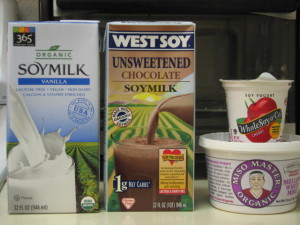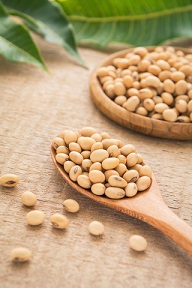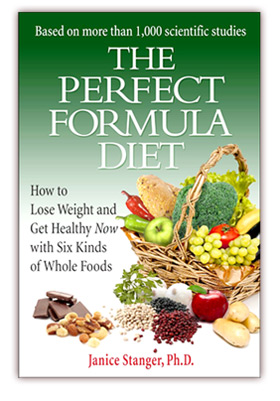
Whole soy foods support health in many ways. Credible published research studies do not find health dangers in eating whole soy foods in moderation
The Health Benefits of Soy Are Real, While the Ideas of Danger Are Fantasies
Remember the school lesson about how, in fifteenth century Europe, influential thinkers said it was impossible to sail across the Atlantic Ocean? The governing idea was that the earth was flat, and anyone venturing too far west by boat would fall off the end of the world. Well, experience proved that popular opinion wrong, and we can smile at it today.
Yet in the twenty-first century, many are frightened by an equally silly idea – that soy is an unhealthy, even a dangerous, food. The truth is the opposite; moderate amounts of whole soy foods are beneficial. How do we know this? Just as in the case

The idea that soy is dangerous to eat is as discredited as the idea that the earth is flat and you will fall off the edge if you sail out too far
of sailing, we look at experience – in this case, what actually happens to people who consume soy.
Let’s take a look at valid studies. Many scary soy myths are based on bad science or profit-driven desire to promote animal foods instead. Researchers may inject large amounts of isolated soy extracts into rats, for example. The effect of a concentrated soy extract injected into a rat has nothing to do with the effect of a human eating a whole, natural soy foods in amounts that consumers would actually enjoy at a typical meal.
What Really Happens When People Eat Whole Soy Foods?
Many of the false alarms surrounding soy are concerned with phytoestrogens, which are a variety of substances found in many plants. Phytoestrogens may, under some circumstances, have feeble estrogenic effects (that is, have an effect similar to estrogen, but significantly weaker). Phytoestrogens may also have anti-estrogenic effects (that is, counter the effects of estrogen in people). Soy phytoestrogens, called isoflavones, are alleged by certain myth-makers to raise the risk of breast cancer and other hormone-related issues.
Credible published research on this question compares groups of people who routinely eat whole soy foods with those who seldom do. Mark Messina, PhD, published an excellent analysis in 2010 in Journal of Nutrition. He reviewed, in depth, twenty years of soy research in people. After considering 107 references, Dr. Messina concludes “other than allergic reactions, there is almost no credible evidence to suggest traditional soyfoods exert clinically relevant adverse effects in healthy individuals when consumed in amounts consistent with Asian intake.” (He defines this as about two daily servings of traditional, whole soy foods.)
Dr. Messina did find research support for health benefits of such soyfoods while debunking common myths. His conclusions include:
• Children and teens reduce their lifetime risk of breast cancer by eating soy
• Soy reduces prostate cancer risk and reduces the risk of prostate cancer spreading throughout the body
• Soy may modestly reduce cholesterol levels and lower the risk of coronary heart disease
• Fracture risk may be lowered by eating soy
• Consuming soy does not feminize men
• Soy does not lower thyroid function in people who have adequate iodine levels; for patients low in iodine, “the appropriate recommendation is to increase iodine intake, not to avoid soyfoods”
Published research since this 2010 analysis reinforces the health benefits of eating
soy. For example:
• Regular intake of soy was found to reduce the risk of ovarian cancer in women in southern China
• Eating soy does not affect the age at which adolescent girls begin to menstruate
• Women receiving assisted reproductive technology to help them become pregnant were significantly more likely to give birth when they ate more soy. Women eating the most soy ad a nearly 80% higher chance of having a baby
• In 2014, after an exhaustive review of published studies, the World Cancer Research Fund International recommended eating foods containing soy to improve chance for survival after breast cancer
Whole Vs. Processed Soy Foods
Edamame (green soybeans, usually eaten boiled) are obviously a whole soy food. But lightly processed soy foods, which you could make in your kitchen if you had the time, are similar enough to whole to be healthy. These include tofu, tempeh, soy milk, soy yogurt, miso, and roasted soy nuts and soy nut butter. These are the foods you want to include in your diet in moderate amounts; one or two servings a day is

Here are some examples of whole soy foods that are conveniently available in stores. Avoid highly processed isolated soy protein, soy oil, and supplements with fragments of the whole soy bean (such as isoflavones in a pill)
reasonable, and consistent with the amount eaten in traditional Asian diets.
Processed soy foods must be made in a factory. These include soy protein isolate, soy oil, and supplements made from soy fragments, such as isoflavone supplements. You are best off minimizing consumption of such highly processed foods, which overly concentrate certain soy components but totally leave out others. Unfortunately, these highly processed, unnatural products are usually the basis of modern American studies of the healthfulness of soy. This research is, therefore, all but useless in helping consumers understand health considerations in choosing whole soy foods.
You can avoid genetically modified soy by selecting organic products, which by definition cannot be made from genetically modified crops.
You don’t have to eat soy to be healthy. But it certainly doesn’t hurt, and is likely to be beneficial if you eat one or two servings a day of whole soy foods.
If you enjoyed this post, you may want to try a couple of these recipes based on whole plant foods.
Intrigued? Now you can use our Whole Foods Blog Finder to target informative, fun postings on whole foods, plant-based diets. Quick information at no cost!
Blog posting by Janice Stanger, Ph.D. Janice authored The Perfect Formula Diet: How to Lose Weight and Get Healthy Now With Six Kinds of Whole Foods, which shows you a healthy, whole foods, plant-based diet that can include tasty whole soy foods. Janice enjoys consuming soy milk and baked tofu several times a week.
Tags: breast cancer, Dr. Mark Messina, infertility, phytoestrogens, soy, whole foods plant-based diet






